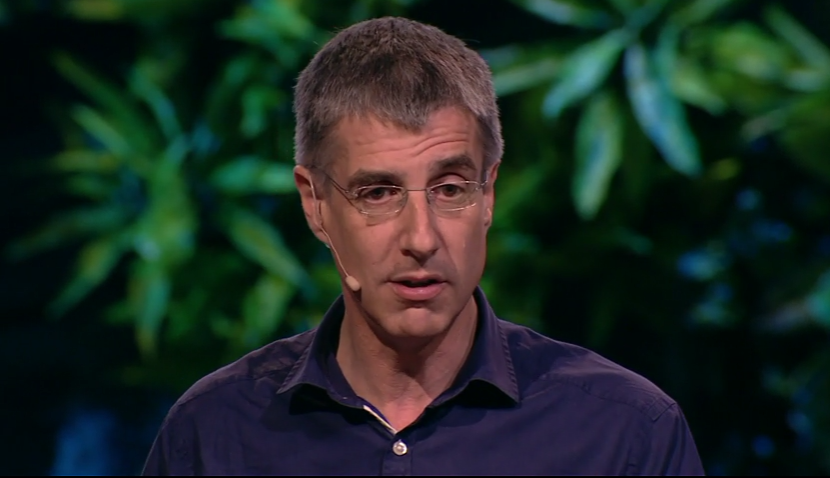So let's think about the inference. You want to generate beliefs about the world.
我们先来看推断。在推断中,我们要建立对于当前情景的“信念”。
So what are beliefs? Beliefs could be: where are my arms in space?
那么什么是信念?信念可以是我的胳膊在空间里的什么位置。
Am I looking at a cat or a fox?
也可以是我在看一只猫还是一只狐狸?
But we're going to represent beliefs with probabilities.
不过我们要把信念用概率来表示。
So we're going to represent a belief with a number between zero and one -- zero meaning I don't believe it at all, one means I'm absolutely certain.
所以在这里我们把所谓的信念表示成0到1之间的一个数--称之为置信值,0表示完全不相信,1表示完全确信。
And numbers in between give you the gray levels of uncertainty.
到1之间就表示不同灰度的不确定程度。
And the key idea to Bayesian inference is you have two sources of information from which to make your inference.
然后注意,贝叶斯推断的重点是我们靠两个信息源来做出推断。
You have data, and data in neuroscience is sensory input.
第一我们有数据,在神经科学里这个数据就是感官输入进来的内容。

So I have sensory input, which I can take in to make beliefs.
所以感官输入是其中一个信息源,用于生成我刚才说的“置信值 ”。
But there's another source of information, and that's effectively prior knowledge.
不过还有第二个信息源,事实上也就是先前的知识。
You accumulate knowledge throughout your life in memories.
因为我们在一生中在过去的记忆中积累知识。
And the point about Bayesian decision theory is it gives you the mathematics of the optimal way to combine your prior knowledge with your sensory evidence to generate new beliefs.
好了,贝叶斯决策论的重点就在于这个理论提供了一种计算方法,能找到最优的办法来整合,知识积累和感官输入这两种信息源以生成新的置信值。
And I've put the formula up there. I'm not going to explain what that formula is, but it's very beautiful.
我现在把公式放在这里。我不详细解释这个公式了,但是这个公式非常漂亮。
And it has real beauty and real explanatory power.
不仅有和谐的内在美,还有实实在在的说服力。
And what it really says, and what you want to estimate, is the probability of different beliefs given your sensory input.
这个公式真正的用途,也就是我们要估测的结果,是给出我们感官输入的情况下不同置信值出现的概率。
So let me give you an intuitive example.
现在我举一个直观的例子。
Imagine you're learning to play tennis, when you play tennis and you want to decide where the ball is going to bounce as it comes over the net towards you.
想象你现在在网球场练网球,当这个网球越过球网飞过来的时候,你要决定这个球落在哪里。
There are two sources of information Bayes' rule tells you.
根据贝叶斯的理论你现在有两个信息源。
There's sensory evidence -- you can use visual information auditory information, and that might tell you it's going to land in that red spot.
一个是感官输入--你的视觉和听觉收到的信息,告诉你球应该会落在图上的红点处。
But you know that your senses are not perfect,
但是,你也知道自己的感官并不完美,
and therefore there's some variability of where it's going to land shown by that cloud of red, representing numbers between 0.5 and maybe 0.1.
所以球的落地点可能会有误差--在图上用这块红色区域来表示这个区域的概率在0.5和大概0.1附近浮动。












